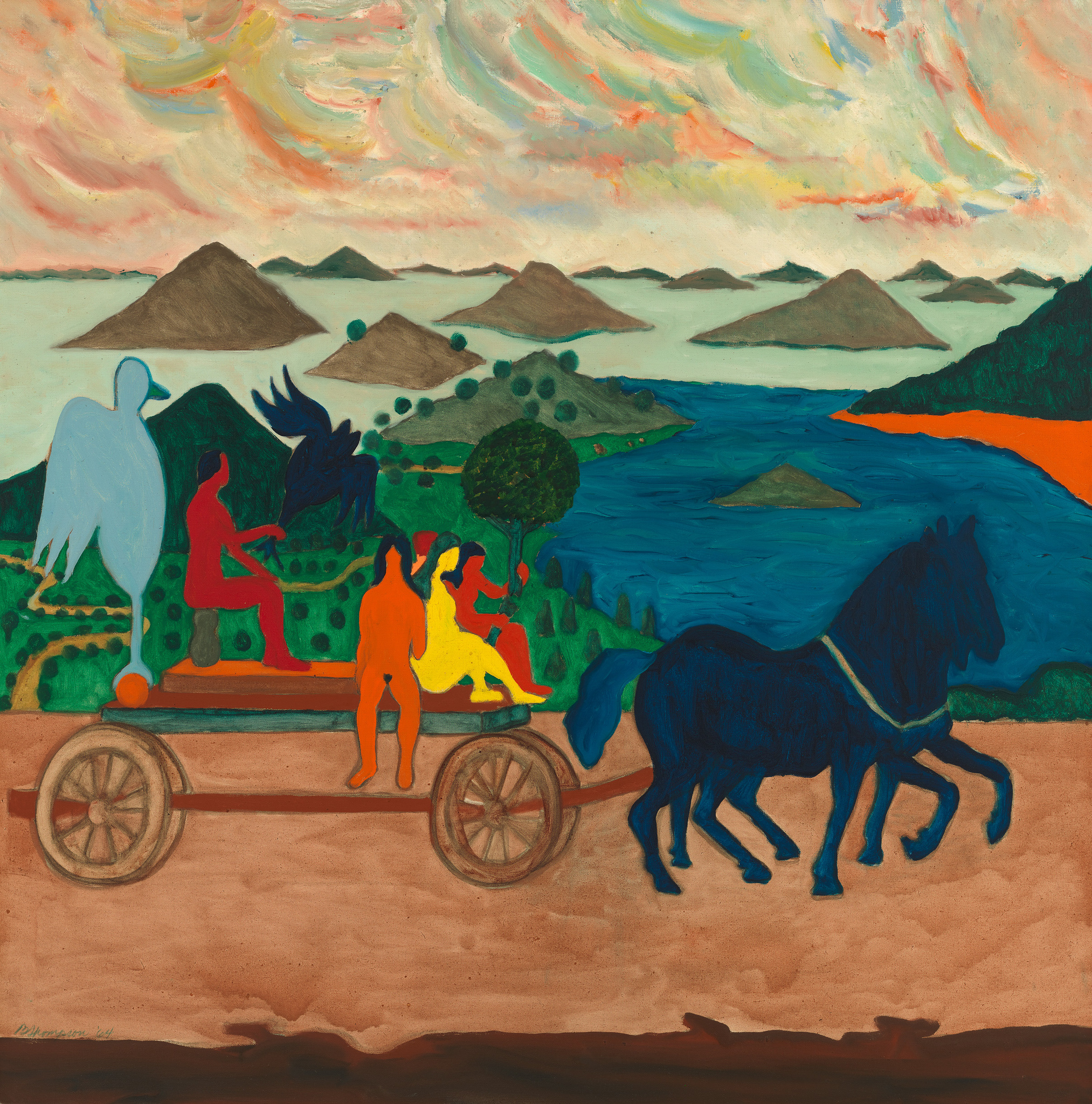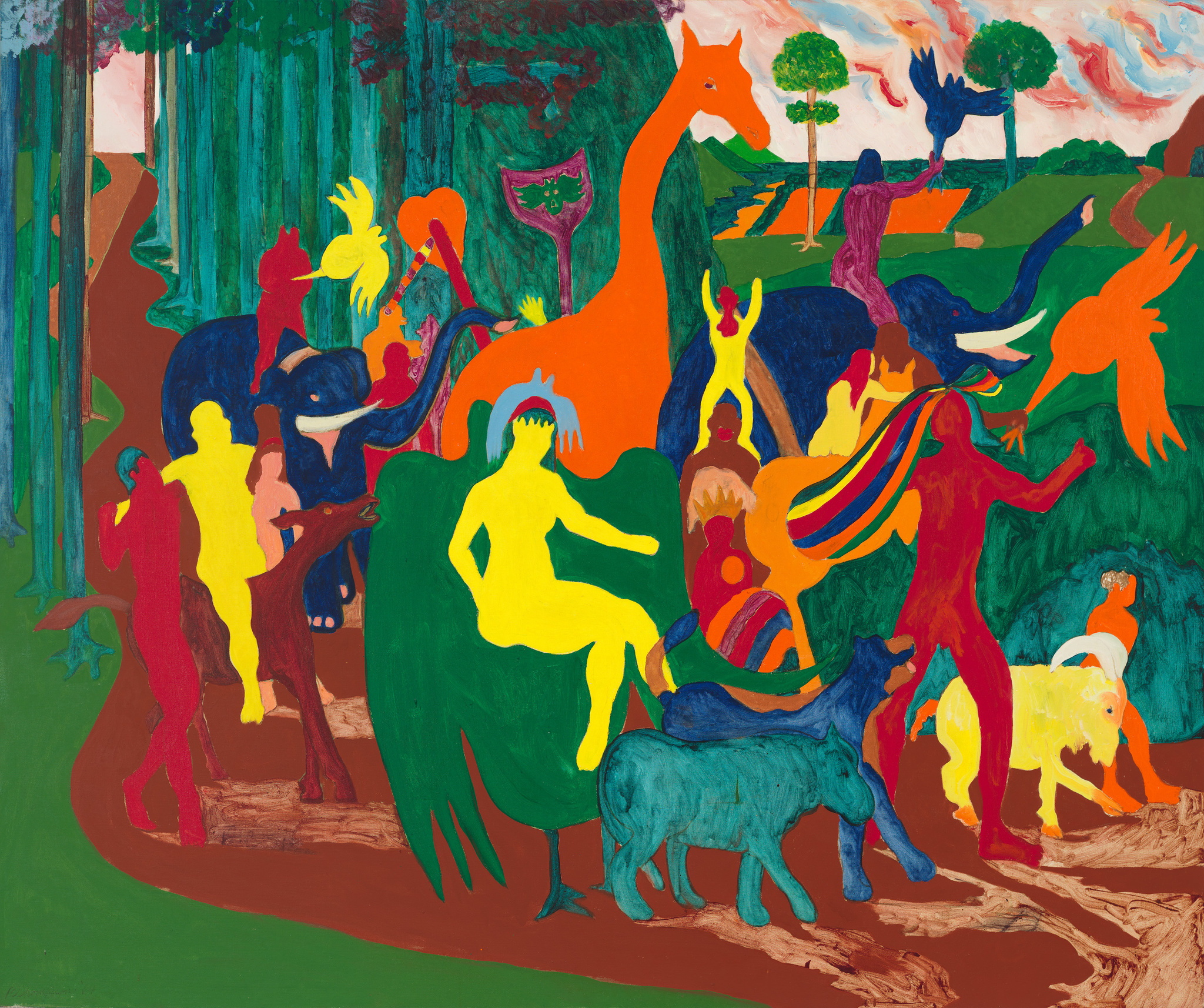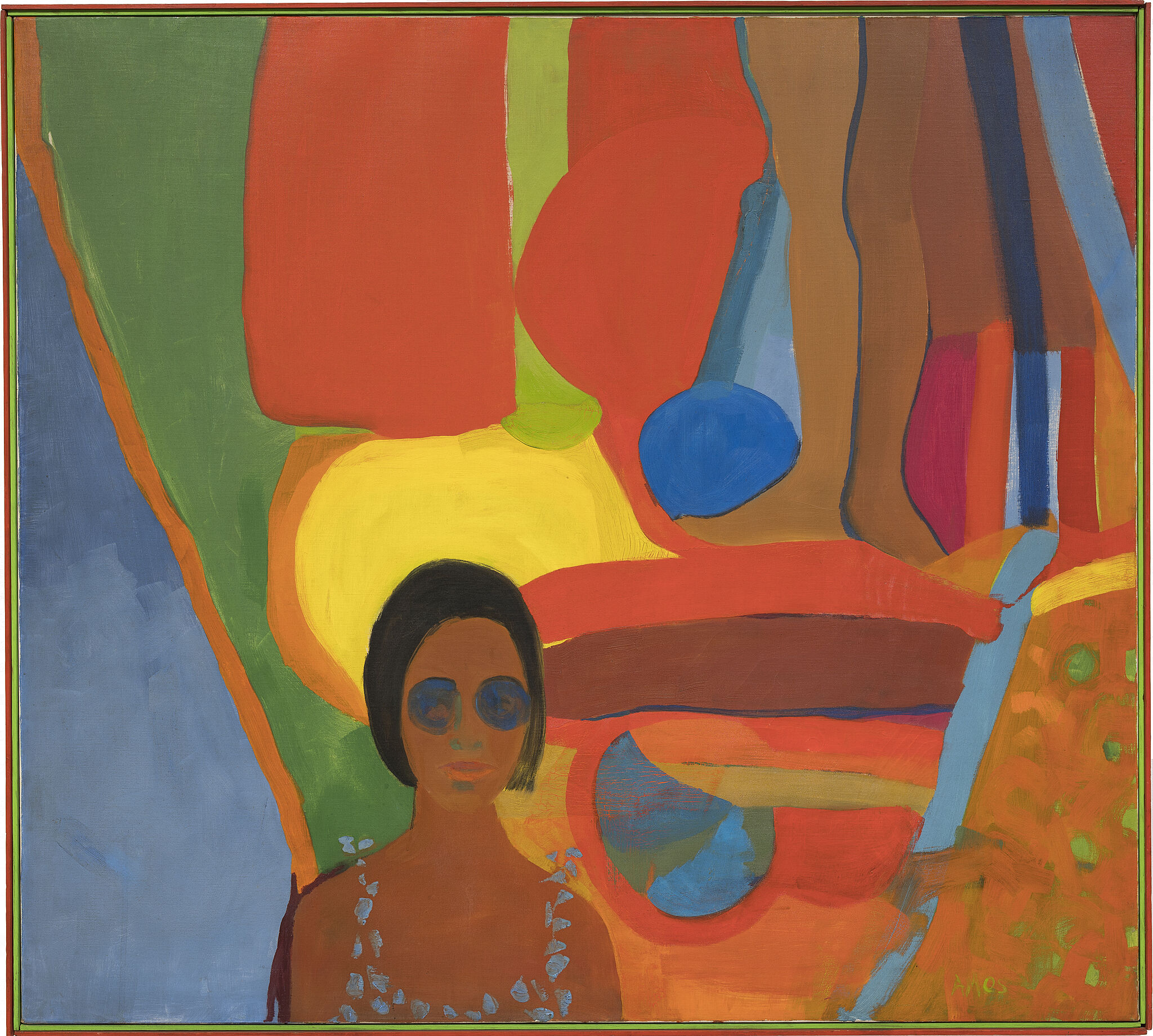Bob Thompson, Triumph of Bacchus, 1964
Mar 14, 2019
0:00
Bob Thompson, Triumph of Bacchus, 1964
0:00
Narrator: Bob Thompson’s Triumph of Bacchus is loosely based on a work by the Renaissance painter Titian. Bacchus—the yellow figure borne aloft by the large form that seems part bird, part throne—rests calmly at the center of the group. Thompson, whose forms were inspired by classical Renaissance artists such as Piero della Francesca, built this composition out of silhouetted figures.
Stanley Crouch: His commitment to these silhouettes is very important, because I think that that was part of the freedom that he was searching for.
Narrator: Stanley Crouch has written an essay on Thompson, exploring the intersections of art history, jazz, and Black American experience in his painting.
Stanley Crouch: That is, that if you use silhouettes and you use them with very bright colors, they're not black, not necessarily, because you make their features secondary to their form. That, I think, is part of Thompson's attempt to achieve the universal. That is, that part of what he's saying is that it's all geometry, anyway. No one can ever say that, because of my race, geometry does not like me. Because that to him I think was important, is that there are certain things that transcend all of our social conventions and social shortcomings.
Narrator: Thompson’s paintings were often allegories celebrating contemporary jazz musicians like Nina Simone and Ornette Coleman. He focuses here on a classical figure, but one who embodies a spirit of improvisation that might also be found in free jazz: Bacchus was the Greek god of wine, madness, and divine ecstasy.
In Spilling Over.



